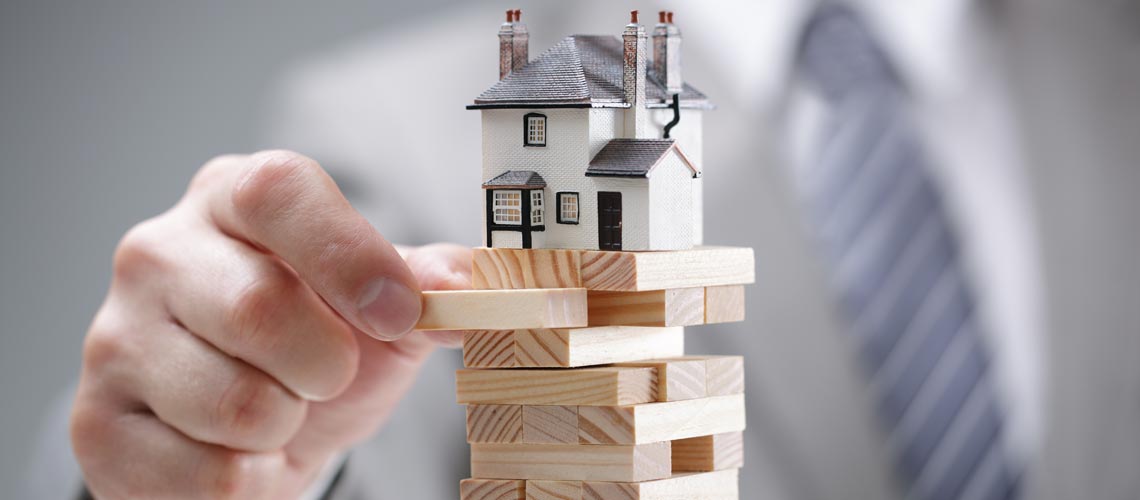Tips For Lowering Home Insurance Premiums
Homeowners insurance can be costly, but there are some ways to lower your premium without sacrificing protection.
Structures that insurers consider attractive nuisances like pools, trampolines and playground equipment can drive up homeowners insurance rates. If you have these structures on your property, talk to your insurance agent about lowering your premiums by removing them.
1. Look for discounts
When it comes to homeowners insurance, we usually think of the premiums we pay — and not the discounts we might be eligible for. But it’s important to know about and ask your independent agent about possible discounts. These could help you reduce your premium, so you can save money and focus on your other priorities in life.
One of the biggest discounts available is for a higher deductible, which means you’ll have to cover more of the cost of a claim before your insurer kicks in. The average homeowner who raised their deductible saved 13% per year, according to NerdWallet’s rate analysis.
/businessman-holding-home-model--loan-concept-992942372-51f862efa517450b931e54f0d5c66c08.jpg)
Other common discounts include loyalty or referral discounts, which reward you for staying with a company and for referring friends and family members to the same insurer. In addition, adding security features like burglar alarms or deadbolt locks and making other preventative improvements like sprinkler systems, impact-resistant garage doors and windows and water-leak sensors can also lower your rates.
Finally, some insurers may offer lower premiums to people with a better credit score, who are perceived as less likely to file expensive claims. For this reason, it’s worth monitoring your credit report regularly and taking steps to improve your score if necessary.
2. Reduce your deductible
When it comes to homeowners insurance, the deductible is one of the biggest factors that can affect your premium. Essentially, your deductible is how much you will pay out-of-pocket in the event of a claim. The higher your deductible, the lower your premium will be.
However, a high deductible can also mean that you will be responsible for more out-of-pocket expenses in the event of a claim, so it is important to carefully consider your options before making a change to your policy. If you are unsure of what amount to choose, it is a good idea to speak with a VIU by HUB Advisor about your comfort level with risk and what different deductible options might look like for you.
In addition to reducing your deductible, there are many other ways to lower your home insurance premium. Taking the time to shop around, take advantage of discounts and avoid filing small claims can all help reduce your rate. Additionally, it is a good idea to re-evaluate your coverage periodically to ensure that you are not paying for unnecessary or excessive protection. By following these simple tips, you can find a policy that fits your budget and provides the protection you need.
3. Re-evaluate your coverage
Even if you’re happy with your current policy, it’s worth checking in with your agent. Those thick renewal documents can be difficult to digest, and it’s important that you fully understand what your policy covers. “Read your entire policy, particularly the declarations page and exclusions page,” says Lynne McChristian, a nonresident scholar with the Insurance Information Institute. “Be sure you know your limits, and don’t be afraid to ask questions if there are any.”
It’s always a good idea to compare rates from multiple providers. Look for companies with a financial rating from AM Best and high customer satisfaction scores from J.D. Power, as well as a reputation for good claims handling. You can also save by bundling your homeowners and auto policies with the same company. That way, you’ll only have to pay one premium for two policies. But make sure you are comparing apples to apples when evaluating quotes, as each company will weigh factors differently. Some will charge more for older homes, while others will discount them. In addition, the type of building material can make a difference, as wood-framed houses are more likely to succumb to fire or severe weather damage than concrete or steel-framed structures.
4. Shop around
Homeowners insurance rates can be high, but there are ways to lower them. Taking steps to limit your risk exposure and shopping around for the best rates can help you save money on your policy.
Having good credit, maintaining a safe neighborhood and making certain home improvements can all help reduce your premiums. In addition, raising your deductible can significantly reduce your home insurance costs, though it’s important to be sure you can comfortably afford the deductible in the event of a claim.

You can also shop around for the best rates when it comes to your homeowners insurance by requesting quotes from several different companies. Make sure you compare coverage apples to apples, however, and look for any discounts that may apply to your situation.
For example, some insurance companies offer discounted rates for a variety of home security measures, including burglar alarms monitored by a central station, deadbolt locks, sprinkler systems and smoke detectors. In addition, many insurance companies will allow you to bundle your home and auto policies for a discount.
You can usually get a competitive quote online by entering basic information about your home, but it’s often more efficient to work with an independent agent who can obtain quotes from multiple companies quickly. In addition, agents may be able to find you special deals that aren’t available on the company’s website.
